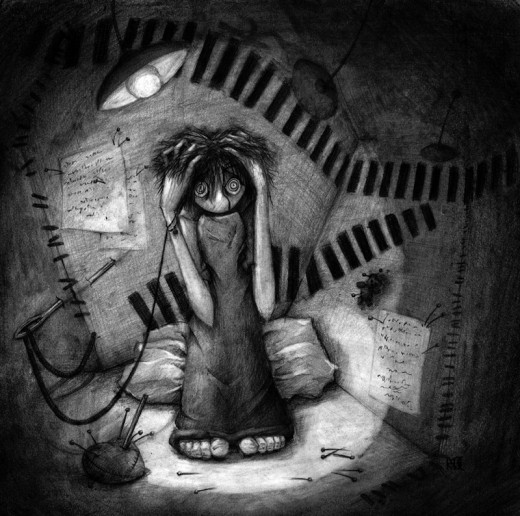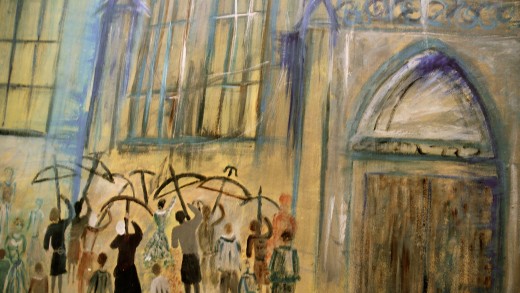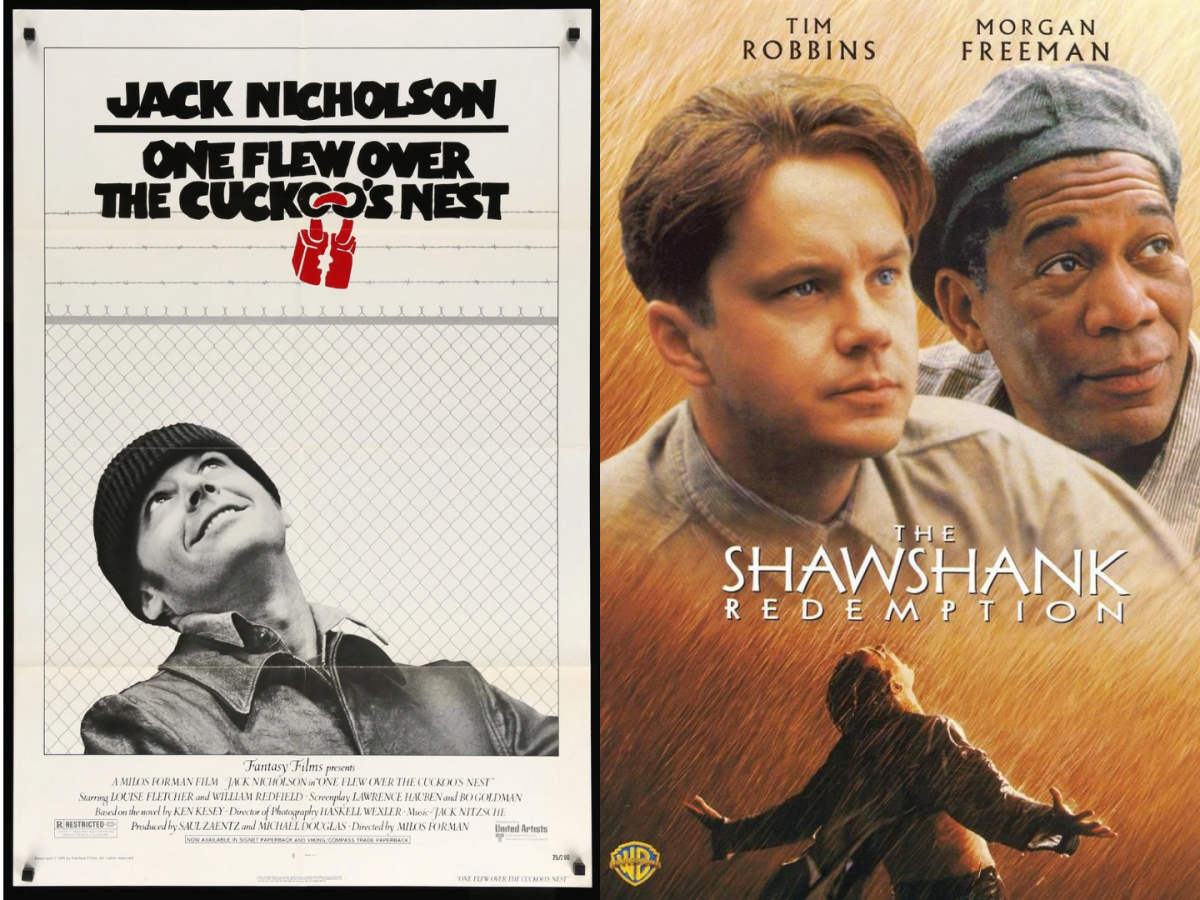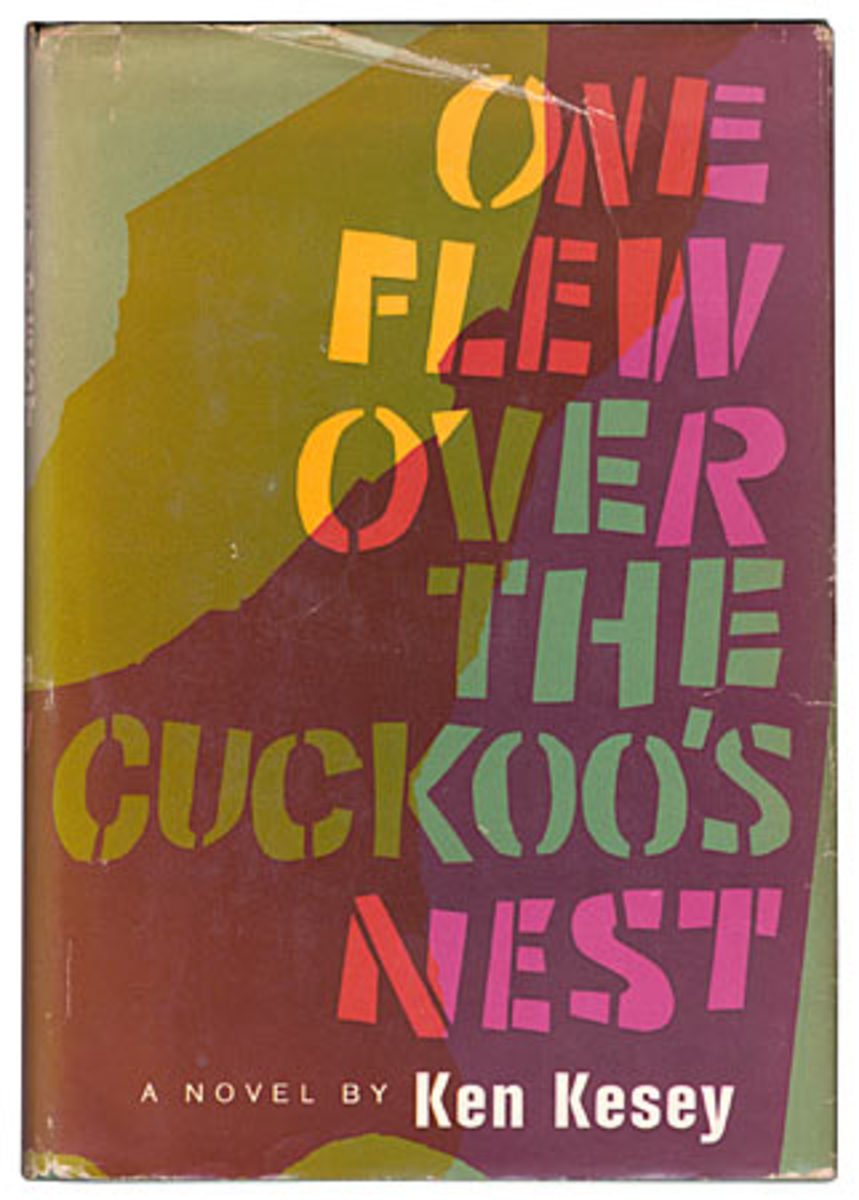Redefining the idea of 'insanity' in Ken Kesey's One Flew Over the Cuckoo's Nest
The Setting

"A good many of you are in here because you could not adjust to the rules of society in the Outside World, because you refeuse to face up to them, because you tried to circumbent them and avoid them... That foolish lenience on the part of your parents may have been the germ that grew into your present illness"
~Nurse Ratched
The drama in One Flew Over the Cuckoo’s Nest begins when McMurphy walks into a mental institution dominated by a nurse who rules with an iron fist. Self-assured with a robust physique, McMurphy makes a bet that he could make the nurse lose her cool poise within a week. But what begins as a game turns into a battle where McMurphy lights a spark in the hearts of his comrades to assert their individuality. McMurphy realizes that the men are not insane, as one might expect, but rather they continue to live under the nurse’s oppression because they feel afraid to go out into the world where the weak and different are shunned. Motivated by the camaraderie he feels with his inmates, McMurphy challenges the nurse’s authority to redefine the society’s idea of ‘insanity’ as well as restore virility in the inmates.
"A passion for homegenization"
Michael Boardman writes that some critics have suggested that the novel implies misogyny and illustrate Nurse Ratched’s cruel actions (such as using lobotomy as a punishment for uncooperative patients ) as support for their argument. I agree with Boardman in that the novel is not so much an anti-feminist work but the nurse created a microworld inside the institution : a universe that mirrors the larger American society, what the Chief calls the ‘Combine’ where society promotes uniformity and has “a passion for homogenization”. The inmates believe that they are different from most people and consider themselves unfit to live a normal life, voluntarily signing themselves into the asylum as a way to shelter themselves from the rest of the universe. They fear what Harding describes to McMurphy about the time when he first realized he felt Different : “I indulged in certain practices that our society regards as shameful. And I got sick. It wasn’t the practices, I don't’ think, it was the feeling that the great deadly, pointing forefinger of society was pointing at me-- and the great voice of millions chanting, ‘Shame. Shame. Shame’”.

The nurse’s domination encourages the men to remain fearful. Instead of being an emotional outlet, the group therapy sessions have become a time for the nurse to indulge in the men’s insecurites. Toward the end of the story when the nurse finds Billy in an intimate moment with a lady friend, Nurse Ratched threatens Billy by telling him that she will talk about the encounter to his mother, which terrifies him because in addition to the Big Nurse, the other woman that holds a tough grip on Billy’s life is his mother. Unable to withstand the consequences of that conversation, Billy commits suicide as he waits in the doctor’s office. Society’s urge to homogenize has has become overbearing to the point that Harding describes civilization as if it were composed of beasts:
“This world...belongs to the strong my friend! The ritual of our existense is based on the strong getting stronger by devouring the weak. We must face up to this. No more than right that it should be this way. We must learn to accept it as the law of the natural world. The rabbits accept their role in the riual and recognize the wolf as the strong. In defense, the rabbit becomes sly and frightened and elusive and he digs holes and hides when the wolf is about. And he endures, he goes on. He knows his place. He most certainly doesn’t challenge the wolf to combat”.
Artistic creativity to madness

"If sociey itself is crazy, false, unjust--then the voice of madness becomes the voice of sanity, and the binary of reason-unreason is subverted" ~Daniel Vitkus
William Schopf points out that the theme of the story is “representative of the the Sixties: man in alienation from himself, society, God and the past; man rootless and unstable in a world spinning away madly and irretrievably.” Daniel Vitkus adds on to this idea by suggesting that in the novel, the idea of ‘crazy’ or ‘insane’ is synonymous to being unique or having original ideas. Vitkus compares artistic creativity to ‘madness’ because: “artistic genius sometimes expresses itself in an iconoclastic impulse which contemporaries identify as madness, and the most forcefully radical art diverges from the cultural and artistic norms manifested in a received, rational tradition”. Although the men in McMurphy’s ward live in an asylum, McMurphy is surprised when he realizes how sane everyone is and even more surprised when he finds out that only a few of the men are committed like he is. The safe haven that they congregated toward to escape the ‘pointing forefinger’ continues to eat away at their problems, changing them from being simply ‘different’ to ‘insane’ in a way that the men become lost in their own world. Realizing the men in their helpless state, McMurphy transforms from a self-sufficient man to an individual who values fellowship and pushes himself to be more than he can be.

The Fellowship of the Asylum

Until this point in life, McMurphy lives as a con artist, naturally looking out for himself. Something changes inside of him once he realizes how vulnerable the men are, that they cannot come to realize on their own power that they are worthy of a normal life. Here McMurphy’s compassion for his fellow inmates takes him, motivating him to continue his definance against the nurse as well as take back the masculinity and confidence that the world stole from the men. To McMurphy, it’s a game when he made a bet with the guys that he could fluster the Big Nurse within his first week at the hospital. But after the first week, McMurphy subdues the rebellion and focuses on behaving well as to finish his sentence as well as to leave as soon as he can. His sudden reticence confuses his fellow inmates, except Chief Bromden who figures out that McMurphy “ [is] giving in because it was the smartest thing to do, not because of any of these other reasons the Acutes were making up. He didn’t say so, but I knew and I told myself it was the smart thing to do...Like hiding. It’s the smart thing to do, nobody could say any different. I know what he’s doing”. Boardman suggests that the novel is a modern day tragedy in that the theme of sacrifice can be used to describe a tragedy: “that tragedy may be a form, rather than a special vision or philosophy, capable of appearing in a variety of guises, then the ‘designedness’ of the book, the way seemingly comic elements serve purposes other than the comic becomes clear”. Boardman also suggests that Kesey solved the dilemma of creating a tragic hero out of a self-sufficient man by designing McMurphy into a man who could sacrifice himself for the sake of others as if “ Kesey had discovered that a powerful tragic action could be constructed around the spectacle of a man who is destroyed because he is forced to become better than he was”.
To be continued...in part two which you can see here

Redefining the idea of 'insanity' in Ken Kesey's One Flew Over the Cuckoo's Nest by StellaSee is licensed under a Creative Commons Attribution-NonCommercial-NoDerivs 3.0 Unported License.








